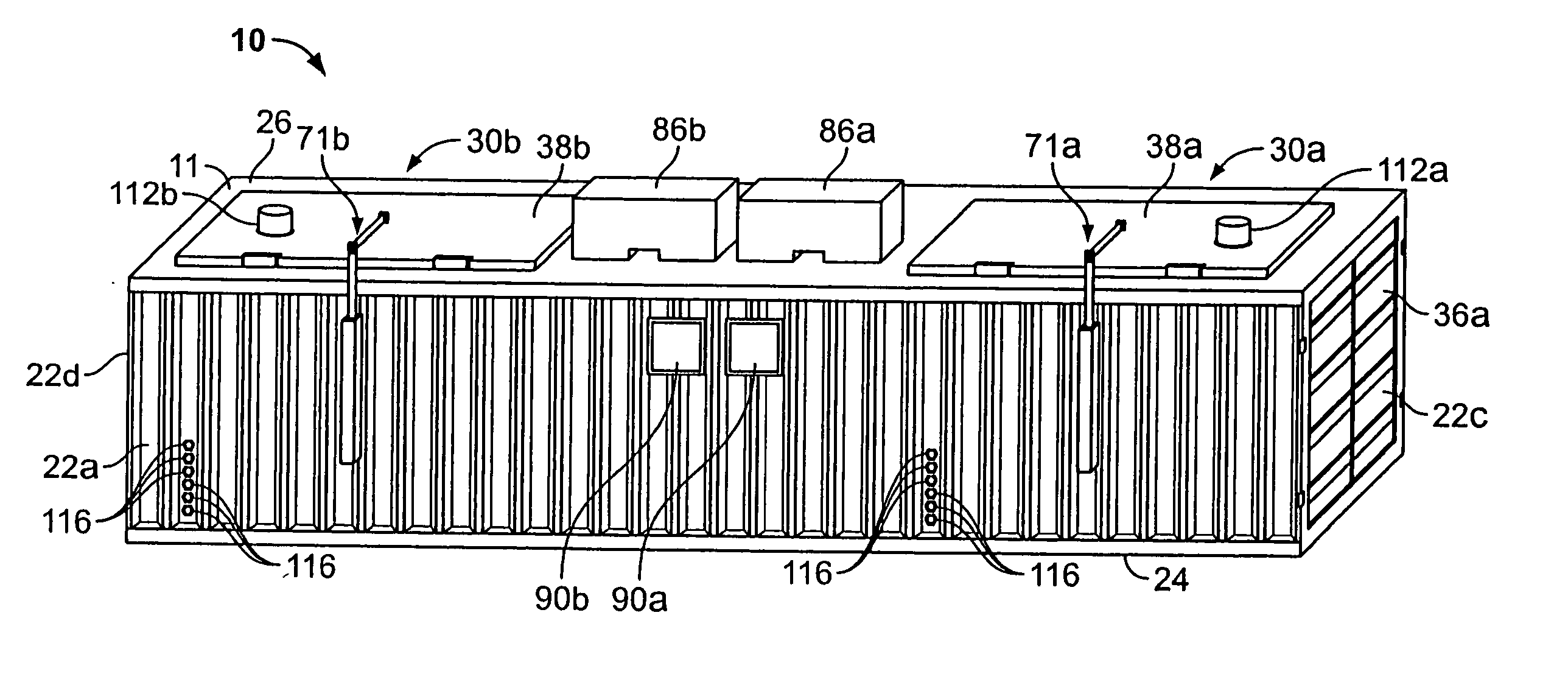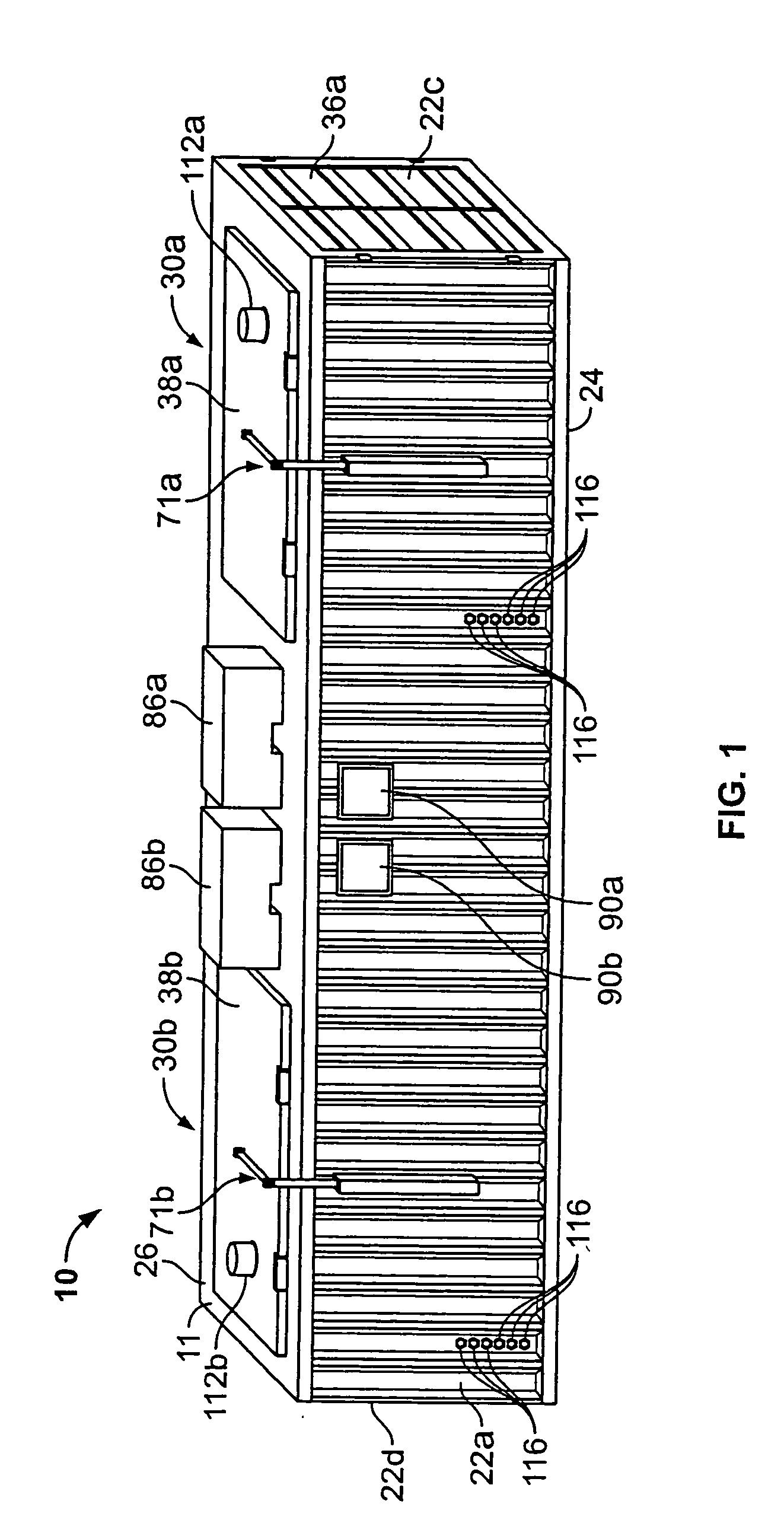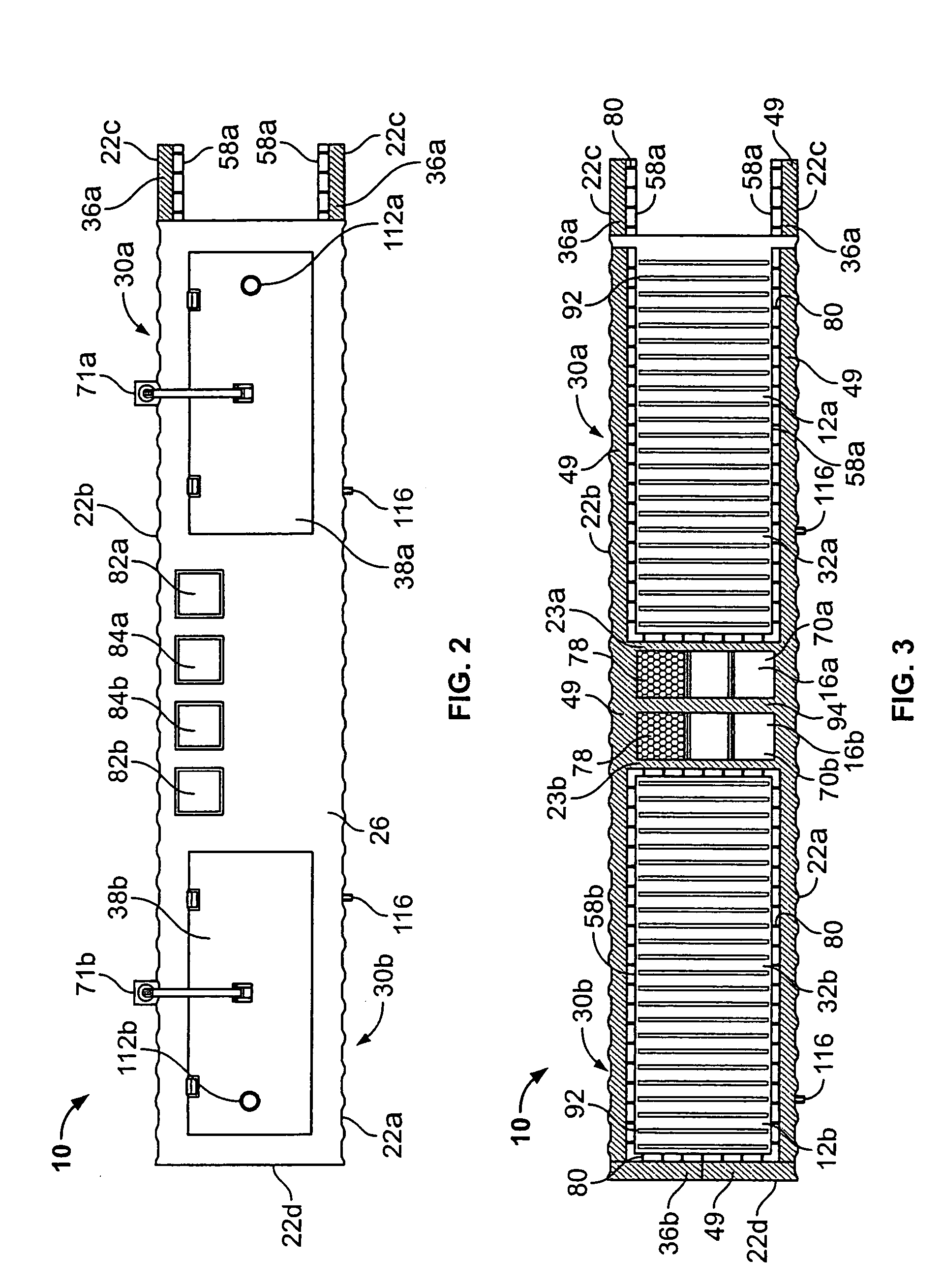Conventional
incineration however is objectionable because the high burn temperatures result in the formation of complex pollutants that are difficult and expensive to control.
Furthermore, the vast majority of incinerated organic material is converted into undesirable
carbon dioxide and nitrous oxides, which are implicated in
global warming,
ozone layer depletion, and the formation of volatile organic compounds which contribute to smog problems in urban areas.
However, the high temperature, depleted
oxygen environment of pyrolisis creates some extremely toxic compounds.
Furthermore, pyrolisis is an inefficient method for disposing large volumes of waste materials due to the requirement that pyrolisis feed stocks must be pre-sorted and processed.
However, conventional gasification systems have proved to be somewhat difficult to cost-effectively construct.
These systems have high capital costs.
The permanency of such systems prohibits the ability to move the
waste disposal systems to a areas of need as job demands change or vary over time.
Yet, higher gasification temperatures tend to reduce the Btu content of the resulting produced fuel gas.
Longer cycle durations also greatly reduce the overall capacity of the
system.
Furthermore, the costs associated with obtaining and maintaining higher gasification temperatures, along with the cost of fabricating a complex gasification reactor chamber that can withstand
prolonged exposure to high temperatures, also increase.
Additionally, the weight of the
refractory liner necessitates a expensive, high strength gasification chamber construction, such as a steel vessel constructed from at least {fraction (1 / 4)} inch thick
hot rolled A36 steel plate and heavy structurals.
This additional weight of the
superstructure further increases the overall cost of manufacturing, shipping, and installation.
An additional problem with the use of
refractory material is the length of time required for cooling the gasification reactor chamber before it can be re-used to gasify a subsequent load of
solid waste material.
More specifically, a subsequent gasification process typically cannot begin until the gasification reactor chamber has cooled to approximately 150 degrees Fahrenheit.
Yet, at the end of a process cycle, the clay refractory material tends to retain heat for a long period of time.
The limited waste
load capacity of prior art gasification systems often required the construction of multiple gasification reactor chambers to meet demand requirements.
As the length of the rectangular sidewalls is increased to satisfy larger feed stock capacity requirements, the size of the gasification reactor chamber creates problems associated with load density in various feed stocks in the gasification reactor chamber.
This problem typically limits gasification reactor chambers to configurations that are approximately 20 feet high, 20 feet wide, and 20 feet long, accommodating approximately 50 tons of
municipal solid waste.
Larger configurations develop problems with the side load
waste dump arrangement.
Because of the
large size of these chambers, they require substantial fabrication and installation time, and as a result are expensive.
The use of fans and / or air compressors also increases the
initial cost of the
system and operating and maintenance expenses.
Conventional gasification systems also use cumbersome techniques for moving the produced fuel gas to the point of combustion.
This large
piping, and associated ductwork, increases not only equipment cost, but also installation expenses.
A further
disadvantage of traditional air draft systems is that produced fuel gases have a tendency to linger in the gasification reactor chamber, and become subject to accidental combustion, which ultimately lowers the Btu content of the extracted produced fuel gas.
This problem is exacerbated by the inconsistency of up-draft
air movement in a natural draft system.
This inconsistent flow causes the evacuation of gases from the gasification reactor chambers to frequently stall, produces negative results in the process, and adversely effects the total
cycle time for the gasification of the feed stock material.
Additionally, the ability to withdraw and vent gases produced during the gasification process out from the gasification chamber affects the overall gasification process
cycle time.
However, because some prior art designs are only capable of moving approximately 9 to 15 cfm, the complete gasification of 2 tons of
waste material could require more than 48 hours.
Therefore, the use of
ambient air as a process gas to obtain desired
oxygen levels in the gasification chamber, results in the unavoidable inclusion of a large volume of
nitrogen.
Such mixing has usually required that four parts of
ambient air be mixed with one part of the produced fuel gas to sufficiently bring the produced fuel gas from its starved oxygen state (+ / −9%) to one of maximum
combustibility (17-20%) Yet, as previously mentioned, thermal processes, such as flaring the mixture of produced fuel gas with
ambient air, may result in the presence of regulated nitrous oxides in the gas exhaust
stream.
The presence of large volumes of
nitrogen in ambient air also increases the size, associated fabrication costs, and weight of gasification systems.
 Login to View More
Login to View More  Login to View More
Login to View More 


